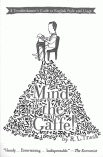April 23, 2007
Mind the Gaffe!
Reviewed by Kay Vreeland
Mind the Gaffe! by R. L. Trask. New York: Harper, 2001, 2006. 290 pages. Paperback. ISBN-13: 978-0061132209; ISBN-10: 0061132209. $11.16; ¥1474.
Larry Trask led a double life—two countries, two careers, two wives—but he had one great passion for linguistics. Ranked by his peers with Noam Chomsky and Stephen Pinker, and author of classics on language, its history, and its structure, Trask also wrote popular guides to good English usage and proper email creation. Born and raised a rural American who worked towards a Ph.D. in chemistry, Trask spent more than half his life as a leading linguistics professor in Britain. Esteemed as a topnotch Basque language scholar, a rare “foreigner” accepted in the field, he distinguished himself in studies of the history of English linguistics as well. In this usage guide he shows himself a delightful writer, frank and acerbic, always to the point, and a man who did not suffer “pretentious twits” at all. A “Johnsonian linguist whose dictionaries read like novels,” as University of Liverpool linguist Roger Wright sums up, he would have been pleased with this American edition of his book (obituary in The Independent, April 7, 2004).
The first edition of Mind the Gaffe! was the result of exasperation with the English Trask found while grading student exams, and it did not include the Americanisms the two U.S. editions later did. Written as a dictionary, it serves as a guide to the best usage in standard written English, as well as a humorous break in a day’s wordsmithing and a revelation of the cultural aspects of language (“The standard term for a citizen of the United Kingdom is Briton, though some Britons strangely object to this term . . . Britisher is strictly American, and it should be avoided in careful writing as almost everyone in Britain objects to it.”).
Since he was American, plans were for him to prepare the American references for the 2005 David Godine edition, but illness prevented his even being able to edit them. Godine, in first publishing the book in the States, inserts them seamlessly, as can be seen from the example above. This American edition was first published as Say What You Mean!: A Troubleshooter’s Guide to English Style & Usage; Godine took Trask’s advice about changing the title since the reference to the London subway warning to be careful of gaps between car and platform would, Trask thought, be foreign to Americans. Now reissued under its original British title and the 2005 American subtitle, the book has become a double boon: correct usage in two versions of English.
 Punctuation did not escape Trask’s attention. The entry on umlaut use in English, which doesn’t have such a thing, gets us all on the right track so we will use the correct diaeresis when writing, for example, the name Brontë. The comma is treated thoroughly, as is other basic punctuation.
Punctuation did not escape Trask’s attention. The entry on umlaut use in English, which doesn’t have such a thing, gets us all on the right track so we will use the correct diaeresis when writing, for example, the name Brontë. The comma is treated thoroughly, as is other basic punctuation.
In style matters, explicitness is a personal hobbyhorse: “Untimely death: This pointless expression is used far too often: when was a death ever timely?” Accuracy was important to Trask: “checking facts” is a prescriptive entry. He also shows his allegiance to Anglo-Saxon roots over Latinate in word choice, surely a point that should be in English curricula everywhere.
No matter what your bent, you’ll find it addressed here. Mine is spelling, and I gorge. But if you like punctuation, or regionalism, or definitions, or grammar, even misquotations, there are nuggets for you. And, if clipped forms, right-node raising, nouniness, or etymological fallacy are among your cups of tea, you, too, will revel in this book. Usually, Trask gives the rationale for correct usage in simple, logical fashion, but sometimes we are treated to a pungent aside, e.g., “It is ignorant drivel to suggest . . .” or “[this usage] is pretentious and will suggest . . . you are a shallow and ostentatious phony hoping to awe gullible people.”
Larry Trask would shudder at such sentences as these two: For all those wishing to empower themselves to communicate effectively, perusing this book, at the epicenter of usage guides in English, fortuitously provides exponential improvement via paradigms of correctness. Idiosyncratic, the linearly arranged alphabetic guide is a thorough and serious one, albeit ironically providing enormous entertainment value.
But he would only have their hypothetical writer wear half a “sandwich board declaring: I am a pretentious twit,” since only half his “worst examples” list of twenty were used; “feedback,” “synergy,” and “input” did not appear, for example. Pompous language, academic jargon, and pretentiousness are always clearly identified in examples of unacceptable usage.
Puzzles there are: Why is Faneuil Hall included and why are nine lines devoted to Kansas and Kansas City (perhaps because, like Oklahoma and Oklahoma City, confusion exists among British writers)? We are happy, however to find: “. . . never Mount Fujiyama, since yama means mount(ain).” The “Turkish names” entry is not a mystery—Trask had been a Peace Corps volunteer chemistry teacher in Turkey. These mysteries and puzzles, and the frequent listing of words related to his own life, are Larry Trask: his organizing principle was himself, not abstract “English Rules.” Common sense was often his arbiter. Since he was a master linguist, we need not quibble at his personal slant, but only delight to be his students.
From Newsletter No. 115 (April 2007)
